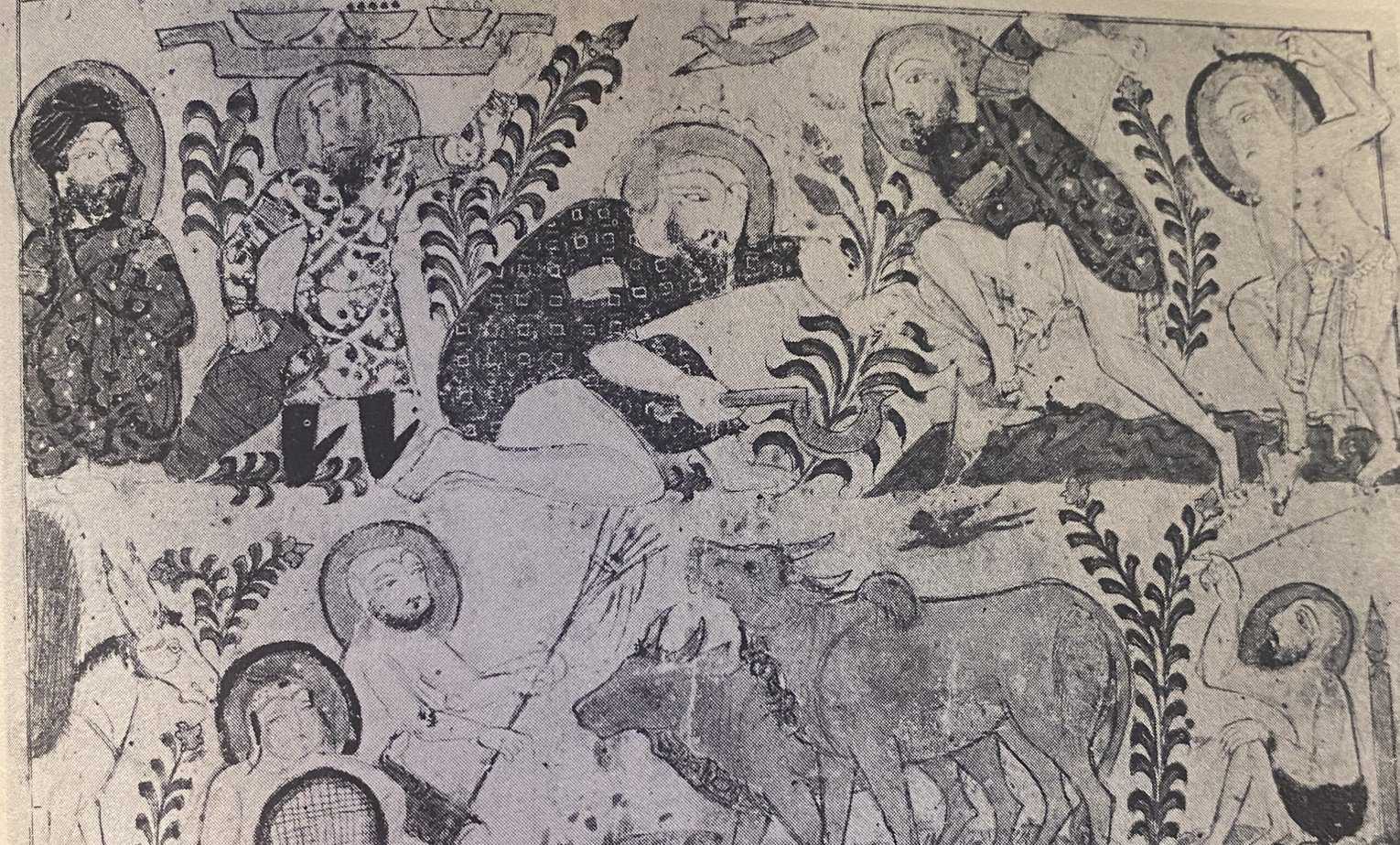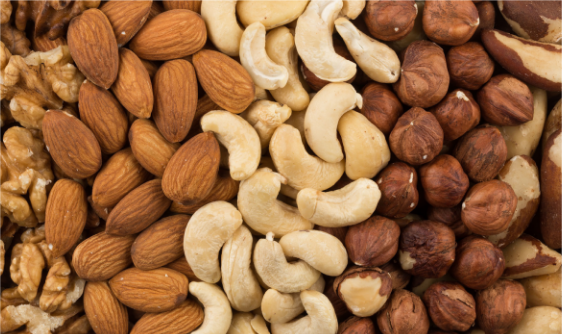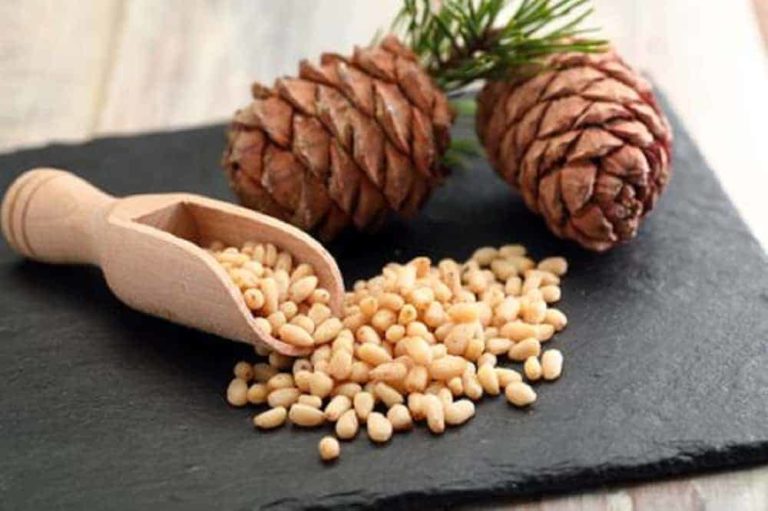Your cart is currently empty!
History Of Arabic Food As Medicine | Healing Through Culture

According to the Koran, the words of Muhammad, pork was impure, animal blood a pollution, and wine an abomination. These were minor prohibitions for Arabs with their great richness of alternatives. Arabic food was often considered medicine due to its incredible healing properties and abundant nutrients.
There were raisins from Jerusalem, olives from Palmyra, and apples from Syria. Wheat from Egypt, millet from southern Arabia, rice from the valley of the Jordan. Sheep and goats from Palestine, fish from Shihr, near Aden, and pigeons from unique fattening towers everywhere. There were also spices in quantity, many from Asia, and rose gardens in many areas to provide the rose water Arabs loved to use in cooking. This contributed to the history of Arabic Food as medicine.
Arabic Food Expertise
In the kitchen, Arabs remained nomadically prodigal with meat. The tenderer parts were cooked in slices or chunks, the tougher ones finely chopped for meatballs. Even the most complicated dishes were cooked in a single pot. Many examples of one-pot cooking are given in a thirteenth-century work written by an upper-middle-class gourmet named Muhammad. Among what he chose to call “simple dishes” was makhfiya.
“Cut red meat into thinly sliced strips about four fingers long. Put the meat into the oil, with ⅛ ounce of salt and fine-milled dry coriander. Fry lightly until browned. Then cover with water, adding green coriander leaves, cinnamon bark, peeled chickpeas, and onion chopped fine. Boil, and remove the scum. Now mince red meat fine, and make it into kebabs meatballs] with seasonings. Take a hard-boiled egg, remove the whites, place the yolks in the middle of the kebabs, and place them in the pan.
When almost cooked, throw in fine ground cumin, pepper, mastic, and ginger. Take additional eggs and beat well. Remove the strips of meat, dip them in the egg while still hot, and return them to the pot. Do this twice until the slices have a coating of egg. Finally, return them to the pot. When the liquor has all evaporated, sprinkle with a Dirham of fine pounded cinnamon, spray an hour,” with a bit of rose water, and leave to settle over the fire for an hour.
Persian Origins Of The Cuisine
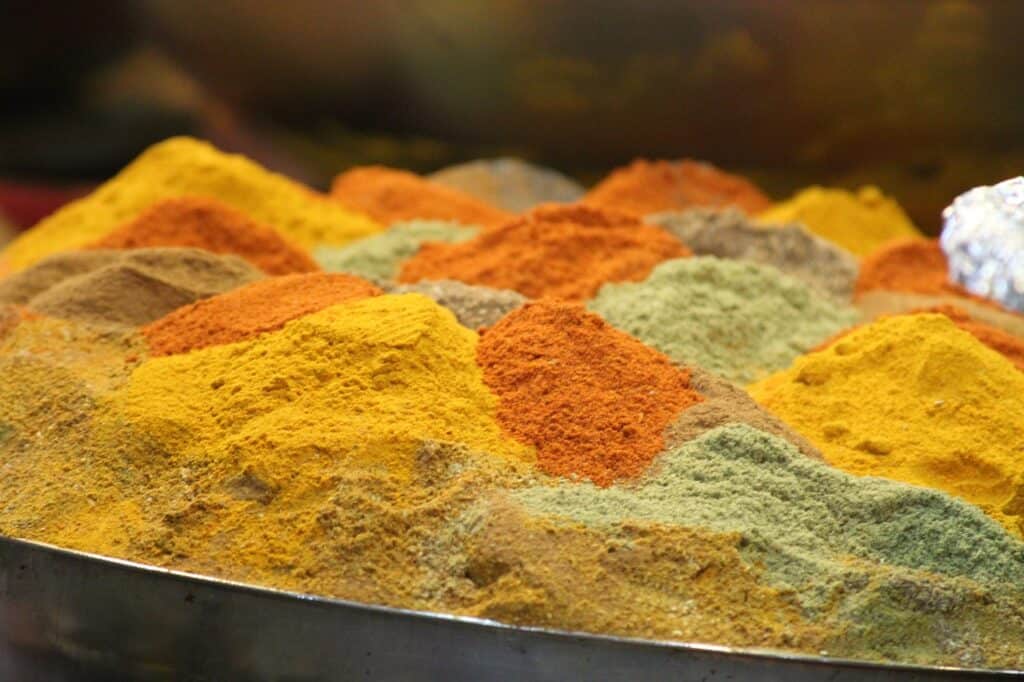
The recipes that have survived from the first half of the thirteenth century are incredible. They assumed to bear some resemblance to the princely cuisine of two or three centuries earlier. They are full of spices from India and China, highly complex and time-consuming to prepare. Many of them were derived from the court cooking of the caliphs’ Persian predecessors.
The Sassanid Persians had been particularly fond of Ahbisa. This meant any dish with the consistency of a starchy jelly. From this which, the modern Turkish Delight, or Rahat Lokum (which means “giving rest to the throat”), is descended. They liked, too, sweet-sour sauces. In the Near East, “meat” meant strong, fatty mutton, which benefited greatly from the tang added by the juice of exotic fruits from the oases of Central Asia: pomegranates, apricots, and lemons.
From the Persians, too, the Arabs inherited the custom of using great quantities of powdered almonds, walnuts, and pistachio nuts. This was to thicken savory or sweet dishes. This technique seems to have filtered through from Persia to Rome earlier. It became characteristic of the Arab haute cuisine in the great days of the caliphate. The Arabs, Italian Merchants, and returning Crusaders carried this to Western Europe. There, it became an exotic and then a commonplace feature of the bourgeois table. In tenth-century Baghdad, a dish of meat or poultry and vegetables would be simmered in a liquid thickened during cooking with powdered almonds. This was similar to the popular Harissa. By the fourteenth century, and the European bourgeoisie was growing fat on appetizing meats bathed in the creamy almond sauce.
Other Influences On Arab Cuisine
Despite the princely and Persian heritage, the diet of Baghdad also reflected other legacies. There were dishes of sliced meat cooked according to a recipe from the Caucasus in the north. This included cakes from Egypt and black truffles from the Arabian desert in the south. There was couscous, the steamed grain dish from the Mahgreb, and “Frankish-style” roast lamb from the West. Maghmuma, the ancestor of moussaka—a layered dish of mutton, onions, and the aubergines (or eggplants) of tropical Asia from the east. These nutrient-rich foods helped in curating the history of Arabic Food as medicine.
The pastoral peasant society of the Near East contributed the oil in which almost every Baghdad dish was put. This was to cook the fat rendered from a sheep’s tail. Time after time, al-Baghdadi began his instructions. “Cut meat into middling pieces: dissolve tail and throw away the sediment. Put the meat into this oil and let it fry lightly.” The popularity of tail fat may have had something to do with the existence of the fat-tailed breed of sheep. Though in this part of the world, whether cause or effect is open to question.
Further Influence From Tradition

The history of Arabic Food in medicine has multiple contributors. The old desert Arab tradition persisted, too, in the constant use of fresh or dried dates and in a few dishes that continued to be popular with the multitude even though they did not appear on the best tables. The nomad origins of hais, for example, were betrayed by the fact that in the thirteenth century, it was still noted as being excellent food for travelers. In texture, it must have been not unlike the old grain pastes.
It contained one pound of dry breadcrumbs with ¾ pound stoned dates. This was the same quantity each of almonds and pistachio nuts and a few spoonfuls of sesame oil. They would shape the resulting mixture into balls dusted with powdered sugar.
One or two other dishes deriving from the peasant or nomad cuisine featured laban. This was probably a preparation similar to yogurt, and “Persian milk” was another soured product.
The Arabs And Dietetic Medicine
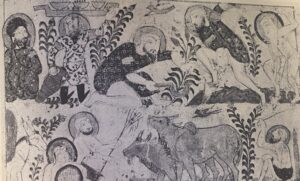
Just as Arab cuisine absorbed recipes from many sources, the Arab mind was receptive to all the intellectual influences of the known world. Among the many subjects that gripped their interest was that of dietetic medicine, which they studied largely from Greek sources and then transmitted back, in slightly amended form, to a Western world that had forgotten it.
The route by which Classical Greek medicine was carried back to the medieval West was devious. Byzantium, heir to the old Greek learning, had been rent by controversies over Christian dogma. During the subsequent persecutions, a number of learned heretics had been forced to flee to tolerant Persia. There, at Jundishapur, they met Syrian, Persian, and Hindu scholars. In the interests of science and medicine, they translated many important works into Syriac, the new language. When Persia fell to the Arabs, and the caliphs of Baghdad gave their imprimatur to intellectual curiosity, many works of medicine were translated from Syriac into Arabic.
Meanwhile, at Salerno, Italy, in a pocket of territory surrounded by Byzantine, a medical school had grown up under the remarkable benedictine monks of Territorial Abbey of Monte Oliveto Maggiore in Tuscany. The school was remarkably free from Christian dogmatism and was noted for the eclectic nature of its teachings.
North Africa And Arabic Food As Medicine
Late in the eleventh century, Salerno arrived at Salerno, a man who had been born in North Africa. This man had traveled extensively in the Near East and India. Many knew him as Constantine the African. He settled down near the school to devote himself to the translation of works from Arabic into Latin. The authors he translated included the Greek physician Galen. These further showed the history of Arabic Food in medicine and the impact that it had on multiple cultures.
The Greek medicine, which was now restored to the Western world, had acquired in its travels a number of Persian and Arabic glosses, some of them relating to new diseases and drugs that had been brought to light by the expansion of the known world. However, Muslim influence had also injected an extra emphasis on hygiene and diet into it. This was a product, at least in part, of Islamic doctrine, which barred the faithful from experiments in dissecting and so deflected Arab research from anatomy to empirical medicine.
Although Salerno remained un-Muslim enough to dissect pigs in the anatomy class and to regard bleeding as a cure-all, it still adopted Arab dietetics. It agreed, however unwittingly, with the eleventh-century Chinese physician who maintained: “Experts at curing diseases are inferior to specialists who warn against diseases. Experts in the use of medicines are inferior to those who recommend proper diet.”
The Salerno Regimen

Returning crusaders developed a Graeco-Arabic-Italian “regimen of health” at Salerno. This was to form the basis of much of European medicine until almost at the end of the sixteenth century. The Salerno regimen of health was founded on the simple, no less appealing then than now, that it was possible to look younger and live longer on a balanced diet. The balance favored by Salerno had nothing whatever to do with the carbohydrates, minerals, protein, fats, and vitamins of modern nutrition. Instead, it was the theory that man and his food contained the same four elements that made the cosmos.
These air, fire, water, and earth manifested themselves in the human body in the form of four equivalent “humors”-blood, bile, phlegm, and black bile. Some men some foods, suffered from excess of one or other of these elements. It was, therefore as undesirable for a man of choleric (or fire/bile) temperament to eat “hot” foods as it was for the elderly, who were assumed to suffer from a surplus of water/phlegm, to eat cold or moist foods. Nurses advised the choleric man to stick to cool foods and avoid warm ones. This regimen can show how the history of Arabic food in medicine came to be from forethought.
People believe that the elderly suffer from an excess of water/phlegm humor. They held this belief for children too.. Even wet nurses forbid cold, moist fruit. In that curious composite of myth and medicine that decreed, right up until the nineteenth century, What was to be fed to a baby, the theories of Galen and Salerno merged with beliefs of even greater antiquity.
The Breastfeeding Philosophy
Many generally agreed that children imbibed not only strength but temperament and morals with their mother’s milk. As far back as the first millennium B.C., the Indian Upanishads had mentioned that a pregnant woman’s diet would affect the type of child who would be born, not just its health. In sixteenth-century Florence, careful mothers would not have dreamed of employing a wild Saracen woman to suckle their infants. This was at the beginning of the twentieth century. The authors of a housekeeping manual dedicated to “the English girls to whom fate may assign the task of being house-mothers in our Eastern Empire.” They felt it necessary to ask what, other than racial prejudice, accounted for fears that “the milk of a native woman should contaminate an English child’s character.”
From the modern viewpoint, it was unfortunate that Salerno should have classified fruit as cold and moist and therefore unfollowed such precepts and deprived themselves of vitamins that were suitable even for the indirect feeding of infants. Mothers who would have done much to give their children a sturdier grip on life.
A Poem From Arabic Medicine
The scholars of Salerno may have inherited their suspicion of fruit from Galen, who claimed that his father had lived to be a hundred because he never ate it. The prejudice probably arose from the fact that fruit is a food of summer and early autumn, seasons which also bring dysentery in warm climates. Furthermore, fruit eaten in large quantities has, independently, a laxative effect.
Nevertheless, perhaps because of the intervening Arab glosses, the Salerno regimen did occasionally pay a somewhat backhanded compliment to fruit—or at least to those fruits that were native
to the Near East and Asia.
Cool damsons are good for health, by reason.
They make your entrails soluble and slack. Let peaches steep in the wine of the newest season.
Nuts hurt the teeth that with their teeth they crack,
With every nut, ’tis good to eat a raisin.
Even though they hurt the spleen, they help the back.
Poems like this gave an artistic perspective to the history of Arabic Food in medicine.
The Four Humors In Greater Depth
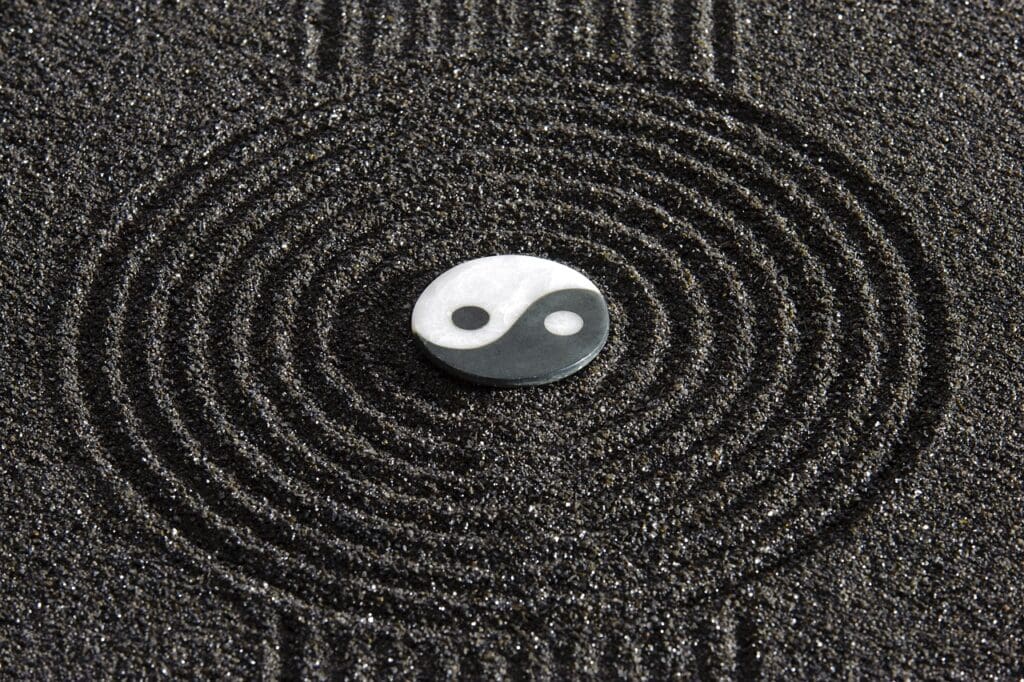
Salerno’s “four humors” were perfectly rational in eleventh-century terms and were supported by long tradition. In China in the sixth century B.C., Ho the Physician had divided diseases into six classes deriving from an excess of one or other of six aspects of chi, the “breath of life” or “subtle wind,” which was a concept similar to the Greek pneuma, and from the layman’s point of view just as abstruse. As time passed, they reduced the six elements to five:
- Fire
- Water
- Earth
- Wood
- Metal
Some of them were classified as yin (cool, moist, contracted, female), and some as yang (hot; expanded, male). Yin and yang were the two most critical opposed facets of diet, as of life.
In India by the first century A.D., such medical writers as Caraka had also settled for five as the primary number of elements, but it was the “four humors” theory first propounded by Empedocles in Greece in the fifth century B.C. and later embroidered by Galen which formed the foundation of the Salerno school of medicine.
Hot Vs Cold With Arabic Food In Medicine
Even in the early days, the idea of four (or five or six) humors raised a variety of problems. There was no difficulty in identifying a fire/bile or choleric man. They categorized them as hot-tempered, bold, and always hungry. They organized the phlegmatic man, too, as recognizable at a glance. However, it was not nearly as easy to discriminate between foods, and the Salerno regimen failed to classify all of them.
Throughout the centuries, wherever the humoral doctrine has persisted, so have uncertainties as to which foods are “hot” and which are “cold.” The distinction is by no means the simple one that modern nutritionists might draw: that energy-giving foods would be “hot” and astringent or insubstantial ones “cold.” Modern Indians categorize meat and strong spices as hot. Indians regard butter and honey, wheat flour, rice, and sugar as cold.
It seems probable that, although physicians in Europe did try to follow the rules of Salerno for several hundred years. They almost certainly, to the detriment of many of their patients, the majority of people could not afford to. This insight follows up on the history of Arabic food and medicine and gives information on how these philosophies were formed.
Blog Assisted By rzwilliams.com

